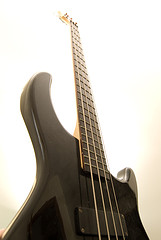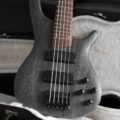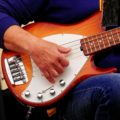In this guide, we will examine various factors to consider when purchasing a bass guitar Learning to Enjoy Bass Guitar - Do you enjoy bass guitar? A bass guitar is a four-stringed instrument that typically accompanies a lead guitar. Some bass guitars have additional strings, with 5 or 6 strings in total. Bass guitars produce lower tones, and an electric bass guitar is connected to an amplifier for enhanced sound. When learning to play the bass… , which will help you better understand bass guitar descriptions and reviews. We will discuss different body styles, neck types, scale lengths, tuning machines, intonation, bolt-on necks, neck-throughs, fingerboards, number of frets, pickups, woods, and finishes. We will explain how each of these features can help you determine the best bass guitar for you.
Body Style:
Most electric bass 5 String Bass Guitars - If you have experience playing a 4-string bass guitar, you might enjoy playing a 5string bass. The 5-string variety is becoming increasingly popular, as bass players seek a broader range of sounds without constantly moving up and down the fretboard. The rise of 5string bass guitars began in the late 1980s, coinciding with the emergence… guitars have a solid body. However, if you’re looking for a rounder and more acoustic sound, consider a semi-hollow body bass instead.
Fingerboard:
When choosing the best bass for you, pay attention to the fingerboard. An uncoated fingerboard produces a warm, natural sound, while a coated fingerboard results in a brighter, more sustained tone.
Neck:
The ideal neck type depends on the size of your hands. Available shapes include round, flat back, oval, “vee,” and asymmetrical, with the neck being slimmer on either the treble or bass side. Generally, four-string basses have narrower necks than five- or six-string basses.
Scale Length:
The scale length is the distance between the nut and bridge saddle, determining the vibrating length of the string. The longer the scale, the greater the distance between the frets. The scale length influences the tonal quality of the notes and the string tension when a note is played.
There is no definitive best scale length; it depends on the specific instrument and desired tone. For example, a five-string bass with a longer neck might produce a more defined low B string sound. If you have smaller hands, a short-scale bass may be the best choice.
Intonation:
Intonation is crucial, as it determines whether the different notes on your bass play in tune. Some basses have slightly off fret spacing, causing them to play out of tune, particularly past the 12th fret. Avoid such basses.
Tuning Machines:
Pay attention to the type of tuning head on your bass guitar, which is used for fine-tuning and maintaining pitch. Enclosed machine heads are preferable to open tuning machines, as they resist rust and airborne corrosives, requiring less maintenance and replacement.
Number of Frets:
The number of frets is a matter of personal preference, with options typically including 21, 22, or 24 frets. Most playing occurs in the lower frets, so this may not be a major concern.
Pickups:
Pickups significantly affect sound quality, so ensure they are of high quality. However, the best pickup for your bass depends on the specific instrument and string combination. Active and passive pickup models are available, but active pickups require battery replacements.
Bolt-on Necks and Neck-throughs:
The best neck type for you is a matter of personal preference. Neck-through basses offer greater sustain and note resolution, while bolt-on necks provide a punchier sound but are more prone to dead spots.
Wood:
The choice of wood affects the tone and weight of the instrument. If you’ll be standing while playing, opt for a lightweight wood. Swamp ash is lightweight and produces low mids and a punchy tone, while alder is another lightweight option with a crisper tone. Ultimately, choose a wood that produces the sound you prefer.
Finish:
The finish of an electric bass does not significantly affect its sound, so feel free to choose any finish you like.
Manuel Marino is a seasoned Senior Producer, Music Composer, and Artist with over a decade of experience. He specializes in branded entertainment across various mediums, including video games, films, and advertising campaigns. With 20+ years as a game music composer, Manuel has worked on numerous platforms, creating diverse orchestral soundtracks. HIRE ME


 Manuel is a passionate, driven, and techsavvy AV technician,
Manuel is a passionate, driven, and techsavvy AV technician, 










